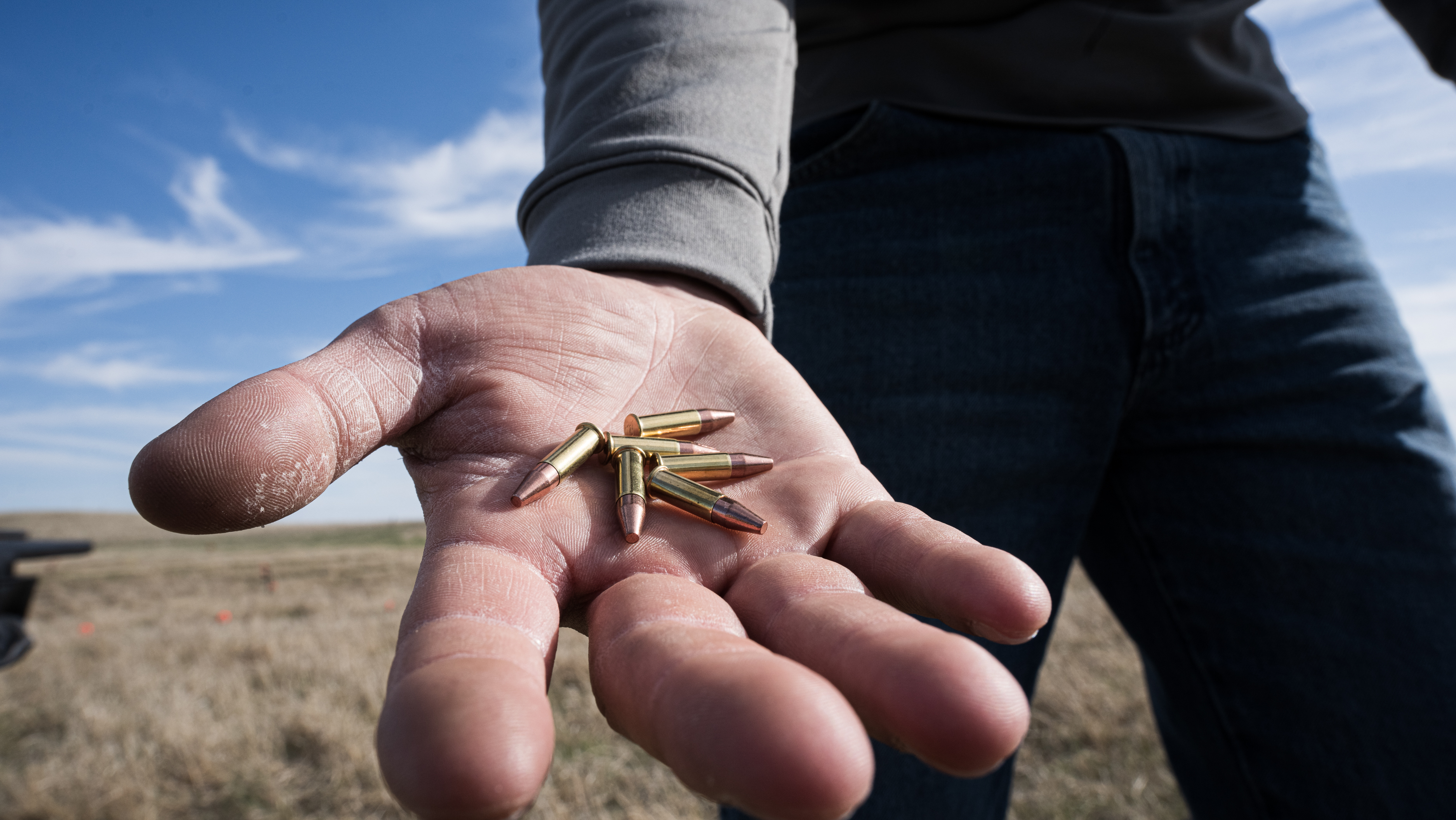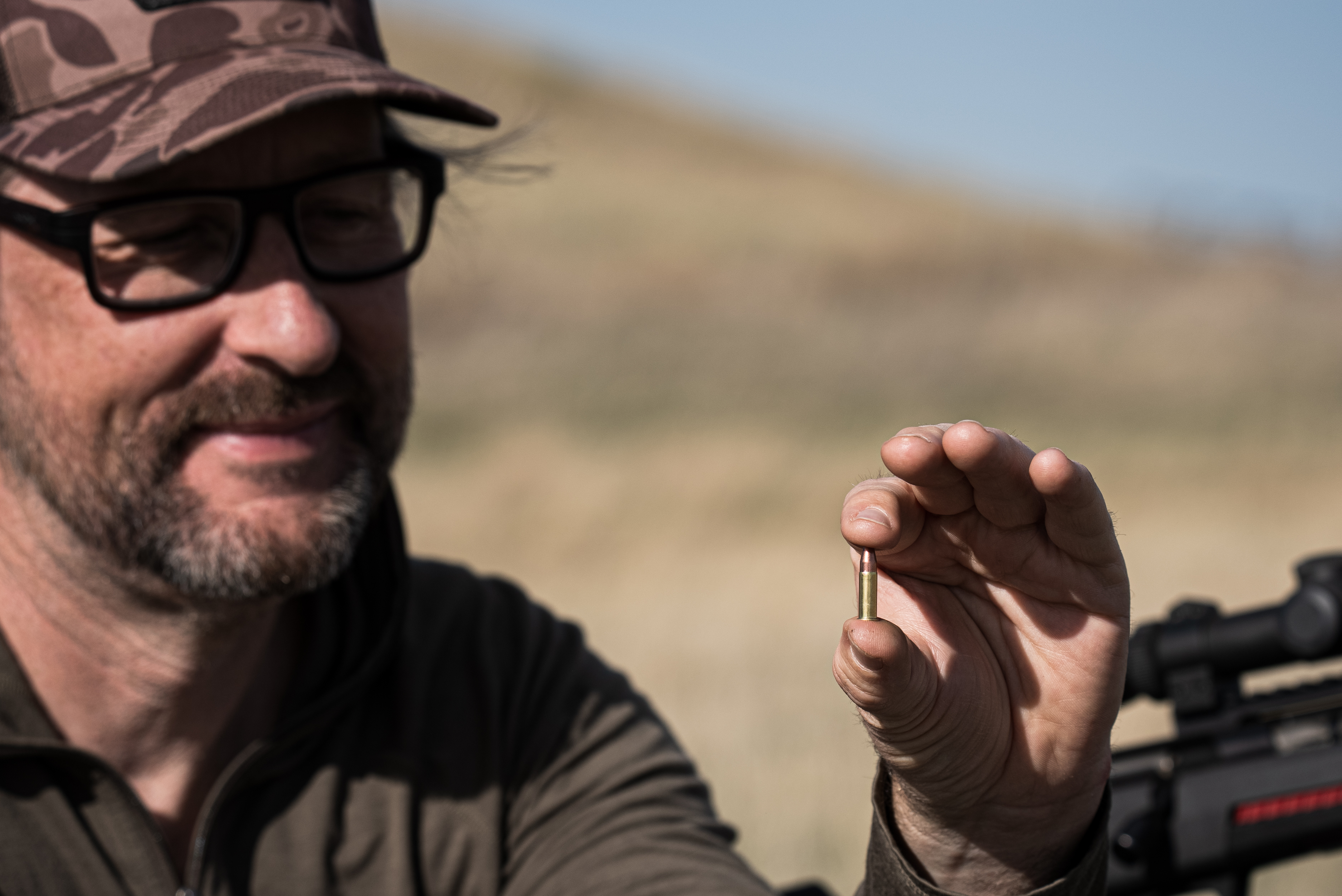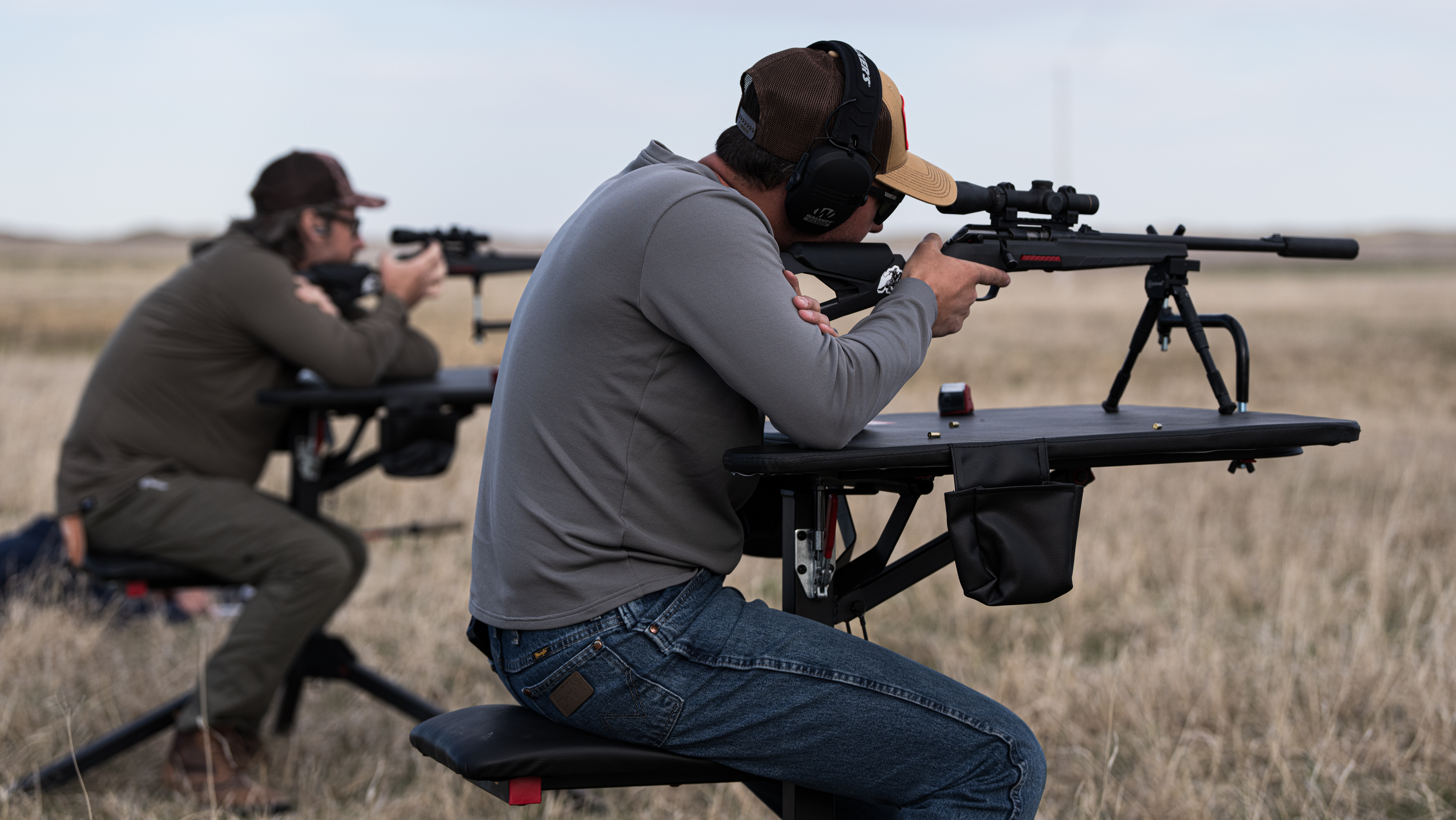Please Welcome the .21 Sharp
No doubt, the 22 LR is the undisputed king of cartridges.
A mid-power offering in the evolutionary chain of the French sportsman/inventor Louis-Nicolas Flobert’s .22 BB Cap of 1845, the .22 Long Rifle walked a perfect line between power, recoil, noise and cost that outshined all other rimfires and is still going strong today. Indeed, it’s estimated that roughly 2.5 billion rounds of .22 LR are manufactured each year!

But just because the .22 LR is winning the popularity polls doesn’t mean the cartridge is perfect. Had it been invented just a few years later it likely would’ve looked slightly different, because ballisticians of the time were already developing better bullet technology.
You see, the .22 LR was designed with a case diameter and bullet diameter that were exactly equal. This means that the bullet cannot be seated in its case without the rear of the bullet being “heeled,” or of lesser diameter than the exposed frontal portion of the bullet. Fact is, heeled bullets are ballistically inferior compared to modern bullet designs, they have limitations in terms of terminal performance, and they are a giant pain to mass manufacture. (There’s a reason only a handful of .22 rimfire manufacturers exist in the world today, and for those of us who love to shoot but loathe ammo shortages, that’s frightening.)
Realizing all of this and being in a position to do something about it, Winchester Ammunition finally achieved what should have been done long ago. And that is, to bring the 22 LR into the modern age.
In doing so however, its engineers faced a dilemma: To utilize a non-heeled bullet, either the bullet had to be smaller in diameter to fit in a standard .22 LR case, or the case had to be larger to accept a .22-caliber bullet. Winchester opted for the former, and by doing so it dictated that the chambers of .22 rifles would not have to be altered by their makers, but rather only the barrels. This would make chambering rifles for the new round much easier. Chamber pressures and overall case dimensions would remain exactly the same, while the new-aged bullet would reap ballistical rewards downrange.
Winchester named the resulting cartridge the .21 Sharp. In essence, it shoots a .210-caliber bullet launched from a .22 LR case. Initial offerings from Winchester include a 34-grain Jacketed Hollow Point, a 37-grain copper-plated lead bullet, a 42-grain Full Metal Jacket and, very interestingly, a 25-grain all-copper bullet Winchester calls the Copper Matrix. Initial velocity results of 1,300 (42-grain) to 1,750 fps (25-grain) indicate the 21 Sharp is slightly faster than standard-velocity .22 LR loads with more energy. Initial accuracy results are very impressive, as is the round’s terminal bullet performance—the Sharp’s forte.
By using modern bullet designs afforded by the non-heeled bullet, Winchester’s engineers were able to make top-quality projectiles for the 21 Sharp that more closely resemble the premium, controlled-expansion bullets of modern centerfires than the antiquated, round-nose lead bullets of most .22 LR loads. Gelatin tests revealed that the 34-grain JHP bullet expanded in a consistent manner to 173-percent of its original size while retaining 99-percent of its weight! Meanwhile, the all-copper load penetrated nearly three feet of gelatin! Sheer performance aside, the Copper Matrix load will be a viable option for rimfire aficionados and small game hunters in jurisdictions where lead-based bullets have been banned.
Clearly, shooters around the world love their .22 LR rimfires. But it’s also clear that Winchester Ammunition is committed to pushing the envelope to create superior products for hunters and shooters, regardless of the status quo. And for that, the sporting public is thankful.






